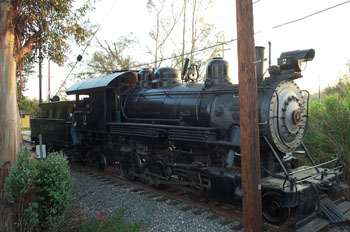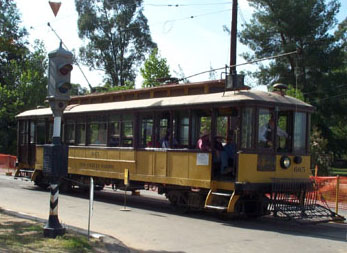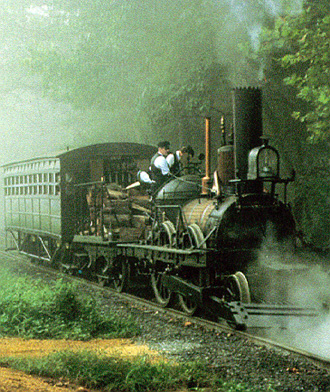Museums Preserve Objects for Education
 A museum is a nonprofit permanent establishment..., open to the public and administered
in the public interest, for the purpose of conserving and preserving, studying, interpreting,
assembling, and exhibiting to the public for its instruction and enjoyment objects and
specimens of educational and cultural value, including artistic, scientific (whether animate
or inanimate), historical and technological material.1
A museum is a nonprofit permanent establishment..., open to the public and administered
in the public interest, for the purpose of conserving and preserving, studying, interpreting,
assembling, and exhibiting to the public for its instruction and enjoyment objects and
specimens of educational and cultural value, including artistic, scientific (whether animate
or inanimate), historical and technological material.1
Basic Functions of a Museum:
Museums are generally considered as engaging in five primary functions for the public's instruction and enjoyment: acquisition, preservation, research, exhibition and interpretation. Interpretation is the instructional process best suited for museums.
Accession is the acquiring of one or more objects at one time from one source, or the objects so acquired, according to G. Ellis Burcaw.2 Museum Objects are tangible, material, three-dimensional items in the collections of a museum, collected for their own sake, that should be preserved for educational or aesthetic purposes. Objects considered for accession are within the defined scope of the museum; significant for research, exhibition, interpretation, or loan; in usable condition; and are not duplicated many times.
Preservation is maintaining of an object's existing form through careful stabilization, maintenance, and repair, including the defense of museum objects from changes such as climatic or other environmental damage; biological damage from insects, rodents or fungus; radiant energy such as ultraviolet light; human abuse, vandalism or theft; faulty procedures; or disasters. Conservation uses knowledge about the physical nature of objects in order to apply appropriate techniques to protect the objects from deterioration.
Research is the study of the objects and related material in their contexts in order to discover or interpret facts about the objects, their histories, technologies and impact. Archaeology, library materials, and interviewing people who used or repaired the objects are tools of research. Research creates knowledge which can be used for publication, exhibition, interpretation and repair of the objects. Some research may lead to the restoration of a structure, railroad car or locomotive, to return its form and condition as represented by a specified period of time, using materials that are as similar as possible to the original materials.
Exhibition is the grouping of selected museum objects, labels, pictorial and electronic aids which together are meant to present an idea with the intention of educating the viewer. Exhibit considerations include the ability to attract attention, ability to retain the attention of the viewer, ability to accurately convey something of value to the viewer, visibility of the objects, safety and security of the objects, overall appearance and good taste. History museum collections include samples of the objects our ancestors used in their daily lives. Explanation, labeling, arrangement and recreated settings are all tools of exhibition.
Interpretation is defined by Freeman Tilden as "an educational activity which aims to reveal meanings and relationships through the use of original objects, by firsthand experience, and by illustrative media, rather than simply to communicate factual information."3 Interpretation is revelation based on information, which is the result of research. It may be communicated to the public indirectly through publications, or communicated directly through exhibits, demonstrations, tours and lectures. People are what history museums are really all about. What were the hopes, the dreams, the successes and failures of the people who built our country? Interpretation of artifacts gives them meaning by conveying why they were important, who used them, how they were used, what function they served, where they were used, when they were used? Read more about interpretation.
 Historic Preservation:
Historic Preservation:
Historic Preservation is defined by Turpin Bannister of the National Trust for Historic Preservation as "a well-rounded program of scientific study, protection, restoration, maintenance and interpretation of sites, buildings and objects significant in American history and Culture."4 Kenneth Chorley explains "the purpose of any historic preservation - the one and only purpose - is to communicate the lessons of history, in order that the present and the future may learn from the past."5
Historic preservation in the United States traces its roots to the preservation of the Hasbrouck House, the longest-serving headquarters of George Washington during the American Revolutionary War, and three other structures, as Washington's Headquarters State Historic Site in Newburgh, New York. In 1850, it was acquired by the State of New York and became the first publicly operated historic site in the country.
In 1858, the Mount Vernon Ladies' Association of the Union raised funds and purchased George Washington's deteriorating plantation home near Alexandria, Virginia, along with a portion of the surrounding land, to preserve and restore the historic structures and the landscape to their eighteenth-century appearance "in trust for the people of the United States." The Association is the oldest historic preservation organization in the United States.
The National Historic Preservation Act of 1966 authorized the creation of the National Register of Historic Places, a list of cultural resources worthy of preservation. Properties listed in the Register include districts, sites, buildings, structures, and objects that are significant in American history, architecture, archeology, engineering, and culture. Administered by the National Park Service, the Register is part of a national program to coordinate and support public and private efforts to identify, evaluate, and protect our historic and archeological resources.
Museums Evolve from Collections to Living Exhibits
One of the earliest museums was established in Alexandria (on the Mediterranean Sea) by the Greek ruler Ptolemaeus about 290 B.C.. It was established as a center for learning dedicated to the muses (hence "museum" house of the muses, the nine Greek sister goddesses presiding over song and poetry and the arts and sciences). The center included a lecture hall, library, collections of biological and cultural objects, an astronomical observatory and living facilities. Four groups of scholars were paid by the royal treasury to do research: astronomers, writers, mathematicians, and physicians. At it's peak the library consisted of 400,000 volumes, or as many as 700,000 different scrolls.
Early museums in modern times were generally the private collections of wealthy patrons of the arts and sciences and typically reflected the specialized interests of their owners. Most commonly taking the form of large trophy rooms, they were viewed only by friends of owner and were not typically open to the general public.
The introduction of a series of international exhibitions open to the general public began with the Crystal Palace Great Exhibition in London in 1851. Their popularity led to the recognition that arts and sciences were of interest to people from all walks of life. The Centennial Exposition in 1876 in Philadelphia is credited with influencing the building of several notable museums in the United States.
The first true outdoor museum, Skansen, opened in 1891 in Stockholm, Sweden, giving birth to the "living history" concept. The 75 acre site included buildings moved in from other locations, provided with gardens and furnishings. The museum employed costumed craftsmen, musicians, dancers and interpreters who gave life to the created folk village. In 1926 Colonial Williamsburg became the first of many preservation projects and outdoor "living history" museums in the United States popularized by the family automobile.
 Railway Museums bring Machines and History to Life:
Railway Museums bring Machines and History to Life:
The Centennial Exposition in 1876 in Philadelphia and the Exhibition of Railway Appliances in 1883 in Chicago both displayed and operated new locomotives from various manufactures along with the "John Bull" which was built in 1831 and other historic locomotives. In 1885 the "John Bull" was donated to the Smithsonian Institution.
The World's Columbian Exposition in 1893 in Chicago again included historic locomotives along with new locomotives from several manufactures. About 50 locomotives are said to have been displayed. In 1894 the Field Columbian Museum includes major railroad exhibits which grew out of the 1893 exposition. This museum remained open until 1904.
In 1901 a locomotive collection was created at Purdue University's Engineering Department to preserve important technical specimens to teach students.
Locomotive exhibits continued to be popular at International Expositions, joined by new street cars. Other universities begin to acquire locomotives, as did Henry Ford for the Edison Institute, and others.
The first trolley preservation is attributed to a group of three individuals in Lewiston, Maine, who in 1939 organized a group of people to purchase a turn of the century car destined to be replaced from the nearby Biddeford & Saco line. They conceived of forming a "living trolley museum", an idea based on the principle that the trolley is a machine, amounting to more than the sum of its parts. With movement, the trolley became a living organism. To bring its history to life, it had to move and be operated. The group formed what is now Seashore Trolley Museum, at Kennebunkport, Maine.
Today many of the rail transportation museums and heritage railways throughout the world have brought representative streetcars, interurban cars, locomotives and railroad cars back to life. Uniformed conductors, engineers, motormen and train crews operate these cars and locomotives the way they were operated in the past, in order that the visiting public can experience first hand an important part of our heritage. Other cars and locomotives are preserved and exhibited to further reveal meanings and relationships of the objects and our history.
For more information about about museums, education and interpretation: recommended reading
|
Orange Empire Railway Museum
Orange Empire Railway Museum's activities are directed toward accomplishing its mission, to "preserve and display artifacts and documents of the rail transportation industry in order to educate the public on the technology, history, and impact of the rail transportation industry in the West and more specifically in southern California." In its mission, ongoing education of the public about the rail transportation industry in southern California and the West is defined as the primary reason OERM preserves and exhibits objects. Three aspects of the rail transportation industry are specified:
By selectively acquiring, preserving and researching objects which are a part of rail transportation industry history in southern California and the West, OERM is able to exhibit and interpret the technology, history, and impact of the rail transportation industry in the region. |
1 American Association of Museums, about 1962.
2G. Ellis Burcaw, Introduction to Museum Work, Second Edition, 1983,
American Association for State and Local History, Nashville, TN.
3 Freeman Tilden, Interpreting Our Heritage. 1977, University
of North Carolina Press, Chapel Hill, NC.
4 Turpin Bannister, National Trust for Historic Preservation.
5 Kenneth Chorley, Colonial Williamsburg
Sharing A Heritage Railroad History Train Technology Railroad Operation Railroad Time Museums & Heritage Railroads Railroads Today
Entire web site copyright 2002-2013, DigitalNetExpress.com, Burbank, California. |
